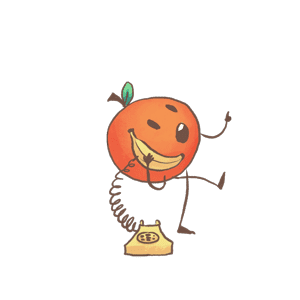Low Fat Diet Plan

A low fat diet plan is one where fewer than 30% of total calories come from fat. According to the National Institute of Health, there is a consensus among doctors that the average diet should have less fat, to reduce heart disease and death.
Fats are one of the three essential macronutrients, but they must be consumed in a limited amount. There are four types of dietary fats. Saturated and trans fats are solid at room temperature. Monounsaturated and polyunsaturated fats are liquid at room temperature. The latter two fats are considered more beneficial as they reduce bad cholesterol levels, but all should be limited. A gram of fat contains far more calories than a gram of carbohydrates or protein.
Staple Foods on a Low Fat Diet Plan
Common low-fat diet plan foods include vegetables, fruits, whole grain cereals, egg whites, chicken and turkey breast without the skin, beans, lentils, peas, tofu, seafood and low-fat dairy. Limit egg yolks to just a few times a week, and if you eat red meat, eat no more than three servings per week. Plant-based foods should be the majority of your calories on a low-fat diet.
Foods to Avoid on a Low Fat Diet Plan
- Limit total intake of fats and oils.
- Avoid butter, stick margarine, shortening, lard, palm and coconut oils.
- Limit mayonnaise, salad dressings, gravies and sauces, unless they are homemade with low-fat ingredients.
- Limit chocolate.
- Choose low-fat and nonfat products, such as low-fat mayonnaise, low-fat or non-hydrogenated peanut butter, low-fat or fat-free salad dressings and nonfat gravy.
- Use vegetable oil, such as canola or olive oil.
- Look for margarine that does not contain trans fatty acids.
- Use nuts in moderate amounts.
- Limit saturated and trans fats.
- Avoid high-fat processed and convenience foods.
- Avoid fatty meats, such as bacon, sausage, franks, luncheon meats and ribs.
- Avoid all organ meats, including liver.
- Avoid cream and sauces made with cream.
- Avoid high-fat snack foods, such as granola, cookies, pies, pastries, doughnuts and croissants.
Benefits of the Low Fat Diet Plan
The low fat diet plan is broadly recommended by doctors across all disciplines for its ability to reduce mortality and dangerous health conditions such as hardening of the arteries and heart disease. According to the National Institute of Health, multiple studies across many countries have shown a direct link between high-fat diets and health problems.
Downsides of a Low Fat Diet Plan
One of the concerns about the proliferation of low fat diet plans are unscrupulous companies who simply replace fat with more sugar. Low fat doesn't necessarily mean healthful. Twizzlers, for example, is a product that is 100% sugar, but advertises that it is "low fat." That doesn't make it a diet food.
Nutrition on a Low Fat Diet Plan
Read ingredient labels carefully to determine both amount and type of fat present in foods. When cooking, avoid deep-fried foods, trim all visible fat from meats and remove skin from chicken and turkey when cooking. Rather than frying, bake, broil, poach or roast. Steam vegetables, and use herbs and no-oil marinades to flavor foods. Opt for cooking sprays to grease pans and skillets.
Browse Diet Plans
 Keto Low-carb, high-fat diet focusing on ketosis for energy and weight management
Keto Low-carb, high-fat diet focusing on ketosis for energy and weight management  Vegan Excludes all animal products, emphasizing plant-based foods for health and ethics
Vegan Excludes all animal products, emphasizing plant-based foods for health and ethics  Vegetarian Plant-based diet including dairy and eggs, avoiding meat for health and ethics
Vegetarian Plant-based diet including dairy and eggs, avoiding meat for health and ethics  Paleo Emulates ancient diet with whole foods, free of processed items and grains
Paleo Emulates ancient diet with whole foods, free of processed items and grains  Mediterranean Rich in fruits, vegetables, fish, and olive oil for a balanced, heart-healthy diet
Mediterranean Rich in fruits, vegetables, fish, and olive oil for a balanced, heart-healthy diet  Low Carb Reduces carbohydrate intake, focusing on proteins and fats for energy
Low Carb Reduces carbohydrate intake, focusing on proteins and fats for energy  Low Fat Limits fat consumption, emphasizing lean proteins, grains, and vegetables
Low Fat Limits fat consumption, emphasizing lean proteins, grains, and vegetables  High Protein Prioritizes protein intake for muscle growth and repair, with balanced nutrients
High Protein Prioritizes protein intake for muscle growth and repair, with balanced nutrients  Gluten Free Avoids gluten, suitable for celiac or gluten sensitivity, focusing on alternative grains
Gluten Free Avoids gluten, suitable for celiac or gluten sensitivity, focusing on alternative grains  Other See how to follow other popular plans like Whole30, Low FODMAP, Pescetarian, and more
Other See how to follow other popular plans like Whole30, Low FODMAP, Pescetarian, and more
As Seen In
Available on Web, iOS, and Android
Eating smart has never been easier
Follow any eating style or create your own
You can customize popular eating styles like vegan and paleo to match your needs and preferences.
Reduce food waste
Planning ahead means less produce going bad in the fridge. Add what you already own to the virtual pantry and our algorithms will use it up with priority.
Take the anxiety out of picking what to eat
Make the important decisions ahead of time and on your own schedule. Then there's nothing to worry about when it's time to eat.
Automatic grocery lists
No more skipping meals because you're missing ingredients. Review your meals for the week and the grocery list automatically updates. Then get it delivered with our Instacart or AmazonFresh integration.
What Our Users Say

"Eat This Much not only helps me hit my macros, but also makes sure I'm not eating the same bland thing every day. I've lost 35 lbs over the past year, and with ETM, I'm eating and performing better than ever."
Sam Konowich @samkonthemankon

"I found out about Eat This Much and lost 32 lbs in 6 months! Now I'm a fit over 50 female in amazing condition, and this site is what I refer to several times a day to ensure I eat properly and manage my macros."
Meg M., awesome ETM user

"After being diagnosed with sleep apnea and high blood pressure, I picked up this app and followed the nutrition plan religiously. Since then I've lost over 40lbs. I still have 20lbs or so to go before I get to where I really want to be, but I'm thankful for the life this all has helped me achieve."
Sam A., awesome ETM user

"I started tracking my weight in April when I was 184lbs. In May I signed up for Eat This Much and immediately appreciated being able to just cook the menu and not worry about what to have for dinner. By November I was down to 155lbs and I still use Eat This Much today!"
Ben Kutil, Product designer
Disclaimer: These are real testimonials, but we're required to tell you that results aren't guaranteed. Eat This Much is a tool for planning your meals, and your success will depend on adhering to your planned meals and nutrition goals. Only you can make yourself improve your diet, but we'll be here to help.
Eat This Much is not a substitute for professional medical advice. You should consult with a medical professional before making significant changes to your diet.
For Health & Fitness Professionals
Powerful, fast meal planning to level up your business.



